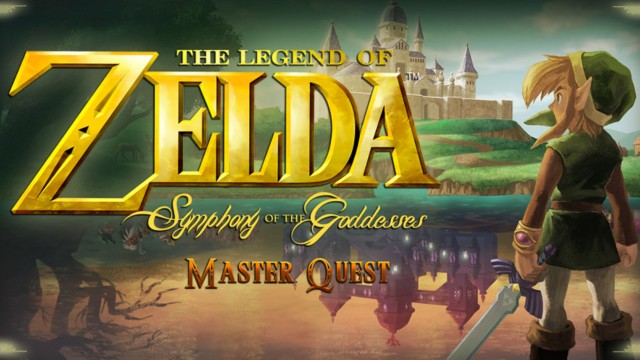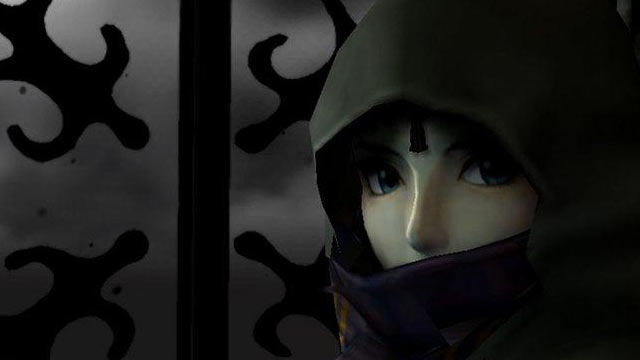
Saturday, August 29, marked my fourth time attending The Legend of Zelda: Symphony of the Goddesses, but things were a bit different this time, with new music created just for the new show (with a new title!), The Legend of Zelda: Symphony of the Goddesses: Master Quest. This year’s show was developed by an entirely new creative team, as the original team is currently working on Pokémon: Symphonic Evolutions. One of the most noticeable differences from the beginning of the symphony was the missing presence of Jeron Moore, creative director of the original Symphony of the Goddesses show (and current creative director of Pokémon: Symphonic Evolutions), whose genuine love for the Zelda franchise and appreciation of the fans who come out for the shows was missed. Jason Michael Paul, producer of the symphony, made an appearance onstage and introduced the show this time around, but also missing was Eimear Noone, who conducted the orchestra during the original tour, proudly brandishing her Wind Waker baton to the crowd, whose friendly personality was also missed at this show. Eimear always seemed very excited to be conducting the orchestra, and as a fan of the Zelda series her enthusiasm and passion were evident throughout the show. I was disappointed she wasn’t present, as she was very much a part of the symphony.
The original four movements– Ocarina of Time, Wind Waker, Twilight Princess, and A Link to the Past— were still the central focus of the show, as were other familiar pieces like Gerudo Valley, Great Fairy’s Fountain, and the retelling of the story of the three goddesses, but new movements dedicated to Majora’s Mask, Skyward Sword, and A Link Between Worlds were produced for the new show, along with a battle theme medley and Dragon Roost Island. The battle theme medley was great, as it incorporated mid-boss battle music and King Dodongo’s theme from Ocarina of Time, the Molgera battle music from Wind Waker, the battle with Goht from Majora’s Mask, and the theme of Fraaz, Master of Icy Fire, from Spirit Tracks. The inclusion of battle music was smart, as combat is such an integral part of Zelda games, in tandem with puzzle solving and story, and the medley flowed very nicely together. Though I’m personally not a big fan of Spirit Tracks, I think it was time it was given some attention in Symphony of the Goddesses and Fraaz’s theme sounded great performed by the orchestra. The music from the battle with Goht was my favorite in this movement, and I loved the footage that played on the screen above the orchestra of the gameplay from that boss battle.
Dragon Roost Island’s piece was a very nice, slightly slower, calmer version of the song that plays while you explore the island in Wind Waker, which eventually builds into a more exciting, powerful end. The music combined with the gameplay footage of Link’s journey from the base of the island to his battle with Molgera and earning Din’s Pearl was fantastic. Skyward Sword’s piece was both epic and emotional, a great testament to the game’s story overall. I was happy that songs like Fi’s theme weren’t ignored, which was performed beautifully on the piano. Previously, the only Skyward Sword music present in the symphony had been the Ballad of the Goddess, so hearing more from this game’s great soundtrack was a nice surprise.
![The Legend of Zelda: Skyward Sword Masthead [Katharine Byrne]](https://www.nintendojo.com/wp-content/uploads/2011/11/art_zeldass_masthead.jpg)
The short Majora’s Mask piece that was played was first featured in the Second Quest tour of Symphony of the Goddesses as an encore piece, and while I was happy to see some respect given to the musical genius of Majora’s Mask, hearing it again made me remember why it disappointed me the first time I heard it: there’s too much of a focus on the Clock Town theme, and little to no focus on any other music in the game. One of the surprises at the end of the evening was a longer movement dedicated to Majora’s Mask, but again, the focus was on the Clock Town theme. Ironically, this mirrors the fact that Link is constantly returning to Clock Town after three days, and that it is the central hub of Termina, but it didn’t seem like that was a conscious decision made during production so much as a connection I drew myself. A beautiful rendition of the Deku Palace music was included in this movement, as well as the Termina Field theme, an impressive performance of the Song of Healing and a very short sample of the Song of Time, a small bit of music from Ikana Canyon that wasn’t particularly memorable (where is the love for Stone Temple Tower or Ikana Castle?!), but no other music from the game. So many opportunities were missed in the Majora’s Mask movement, especially because it wasn’t as long as the symphony’s four main movements but certainly deserved to be. Given that the Master Quest tour poster features art from Majora’s Mask 3D, I would’ve expected a heavier emphasis on the game’s music library than what we experienced.
Repetition was an odd issue with the new music produced for this year’s show; the Legend of Zelda theme was featured too often, and it felt like it was a crutch the creative team leaned on too much. While it’s certainly iconic, fans of the series don’t want to be beat over the head with it, especially when we know how much incredible music the series has to offer that the creative team could have pulled from. As was previously mentioned, the Clock Town theme was definitely a crutch for the Majora’s Mask pieces, and despite the fact that there are songs that appear across multiple games, like Zelda’s Lullaby, the Dark World theme, or the Hyrule Castle theme, this doesn’t mean that they should appear in the movements for both games. The movement for A Link Between Worlds featured so much music from A Link to the Past that the two movements were almost audibly indistinguishable, which was a shame because the original music that was featured from A Link Between Worlds sounded so beautiful. Why dedicate a portion of the show to the newest Zelda title (not counting Majora’s Mask 3D) if you’re not going to focus on its original score? Neither game is at all limited in the number of songs they feature that can be represented symphonically.
Gameplay footage also had its own share of repetition in the show; in the Twilight Princess movement, the same footage of Midna meeting Wolf Link in prison was shown twice, which seemed strange and almost as though it was a mistake, and the same footage of Link fighting Molgera was showing during the Molgera battle theme and the Wind Waker movement. A strange editing decision was made to alter the particular gameplay showing during the Twilight Princess movement; while the movement’s music originally ended in time with footage of the final battle with Ganondorf and Midna’s goodbye to Link, it instead ended with Zelda’s concession to Zant, her soldiers being defeated and the world being consumed by Twilight, and the four light spirits descending on Hyrule Field and Link at the end of the game. It was a strange choice, one that perhaps was meant to emphasize the darkness of the game but didn’t at all match the tone of the movement’s end, which retells the game’s story from beginning to completion and ends on a positive note (no pun intended).

One addition that was well-received by the crowd were video interludes of Shigeru Miyamoto, Eiji Aonuma, and Koji Kondo (who got particularly strong applause when he appeared onscreen) discussing their memories and ideologies behind the Zelda series and introducing the movements of the symphony. It was really great to finally see some “official” Nintendo presence at the show, as previous shows I’ve attended haven’t featured any words of acknowledgement or praise from anyone at Nintendo (despite the fact that Nintendo made the music from Symphony of the Goddesses available on CD with the Skyward Sword special edition, in honor of the series’ 25th anniversary).
Though I’ve seen the show four times now, the experience never gets old for me, especially because it’s an opportunity for Zelda fans to congregate and celebrate the franchise we all love dearly. However, I can’t help but feel like the vast wealth of musical history available to the creative team keeps getting ignored, and songs that are either more well-known, are obligatory inclusions, or are from the earlier portions of the games, rather than farther into the story and gameplay, are considered for the symphony. The four original, main movements are near perfection, as are the other pieces from the first tour, but the more recent music that’s been produced could reach a bit deeper. Twenty-nine years’ worth of temple, town, dungeon, shop, and character themes galore are sitting untapped, many of which are especially significant to the series and to the longtime fan, not just to the layman that might hear the Legend of Zelda main theme and recognize it.
This isn’t to discourage you from going to The Legend of Zelda: Symphony of the Goddesses: Master Quest if you get a chance– on the contrary, if you can snag some tickets for an upcoming show near you, do attend. The experience is grandiose, the music is beautiful, and at the San Francisco shows I’ve attended, we’ve been lucky enough to hear the Skywalker Symphony Orchestra perform; I just hope that for the Legend of Zelda’s 30th anniversary next year, if Symphony of the Goddesses tours again or Nintendo produces another symphony CD, that more of the series’ musical library is explored.




 ShareThis
ShareThis







I never got to see the original, but I have to agree that it was an awesome show and well worth the price of admission. One of my favorite parts was just picking up street passes. The only time I got more street passes was when I went to the Pokémon national championships a couple of years ago. It’s amazing to experience music from my favorite games redone orchestrally. I definitely recommend going if you have the opportunity.
Going to see this with my Dad in two weeks and while I’m excited, I’m also confused at the presence of two Majora’s Mask suites (never mind the fact that I’m not the biggest fan of Skyward Sword). Not sure why they kept the old one.
Granted, I know I’ll love it as I did the first one, but I wish they still played the Link’s Awakening suite. The Ballad of the Windfish movement they had in the first one was easily the best part.
I had a lot of fun watching this. I do think that if Nintendo does a third concert around the Zelda series, they should start totally from scratch.